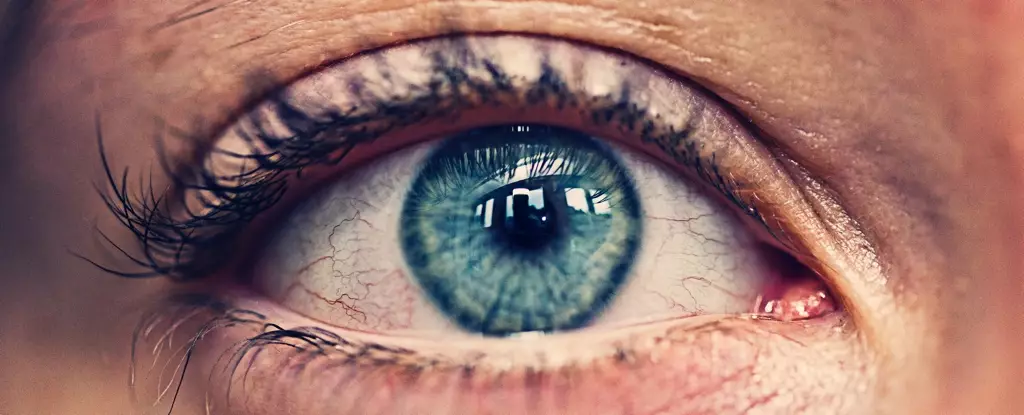The growing dialogue surrounding climate change often dwells on its environmental impact, economic repercussions, and sociopolitical implications. However, the lens through which we view climate change must also encompass its effects on human health — particularly eye health. As illustrated by the story of Alka Kamble, a farmworker from Maharashtra, India, the relationship between extreme weather conditions and deteriorating eyesight is becoming increasingly evident. Kamble’s plight reveals a neglected aspect of climate change: the threat it poses to our vision, a vital yet often overlooked aspect of public health.
Kamble experienced blurred vision for an extended five-month span but felt compelled to forgo medical consultation due to financial constraints and the demands of her labor-intensive job. This underscores a critical issue: many individuals living in vulnerable conditions can face life-altering health challenges while lacking adequate resources to seek help. In Kamble’s case, a sudden awareness of a nearby free eye clinic finally led her to discover the profound impact that constant exposure to heat and UV radiation had on her eyes, highlighting a stark reality faced by agricultural workers worldwide.
Rising Temperatures and Eye Conditions: A Violent Cycle
Researchers are discovering alarming links between climate change and various eye conditions, notably cataracts. As temperatures soar, albeit due to anthropogenic forces, the risk of developing eye disorders substantially increases. The implications escalate further as extreme temperatures disrupt biological processes essential for maintaining eye health. Eye lenses, made from complex proteins, require a stable condition for transparency. Extended exposure to heat generates harmful reactive oxygen species that compromise this structural integrity, leading to cataract formation.
Evidence from a long-term study in southern Spain elucidates this connection quantitatively: for each degree Celsius increase in average temperature, there are roughly an additional 370.8 cases of cataracts per 100,000 individuals. As farmers like Kamble face intensifying heat waves and increasing responsibilities, the likelihood of premature cataract development rises alarmingly. Thus, the narrative of climate change isn’t just about rising seas and melting glaciers; it extends to how we see the world, literally.
UV Radiation: A Silent Threat to Vision
In addition to heat exposure, climate change is intensifying our vulnerability to ultraviolet (UV) radiation. This radiation emerges as a secondary concern stemming from behavioral shifts and environmental changes. Hotter weather often encourages more outdoor activity—ironically exposing individuals to heightened UV rays. Moreover, climatic factors in particular regions exacerbate UV exposure; for instance, dry winds can strip the air of moisture that typically serves to absorb UV radiation, endangering unwitting inhabitants.
The intimidation doesn’t end with cataracts. Increasing UV exposure can lead to additional conditions such as conjunctivitis, keratitis, and even degenerative diseases affecting the cornea and retina. This cascade of detrimental effects correlates with studies indicating that mere increments in temperature can significantly amplify the incidence of these eye disorders. An alarming study highlights that in regions experiencing temperatures above 28.7 degrees Celsius, the risk of conjunctivitis escalates by a staggering 16 percent.
The Vicious Cycle of Drought and Nutritional Deficiencies
Perhaps more insidious than direct exposure is the indirect pathway through which climate-induced extremities create nutritional deficiencies that compromise eye health. Drought-induced food instability can lead to insufficient intake of essential nutrients necessary for maintaining optimal eyesight, heightening the susceptibility to various eye diseases. Vitamin deficiencies can hinder the optic nerve, creating an additional layer of risk for a population already grappling with the harsh realities of climate change.
Compounding these issues, unsafe water usage during droughts can lead to eye infections, further aggravating the burden of eye-related health complications. In light of these threats, the interconnectedness of climate, nutrition, and health becomes painfully clear; they form a web from which the most vulnerable populations struggle to escape.
Solutions and Advocacy: Protecting Our Vision
Amid these dire circumstances, solutions are often within reach. Organizations and governments can take significant strides towards safeguarding eye health by providing adequate shade in work environments and implementing regular breaks for outdoor workers. In addition, protective gear like UV-filter sunglasses can be life-changing for those exposed to glaring conditions, offering nearly 38 percent more protection compared to not wearing any eyewear.
Raising awareness of ocular health and providing accessible healthcare services is crucial. For instance, Kamble’s cataract surgery was made possible through governmental programs aimed at combating blindness within impoverished communities. Such interventions not only serve immediate health needs but also empower laborers with the knowledge and resources to protect their well-being against the relentless impacts of climate change.
Ultimately, the call to action extends beyond individual responsibility—it’s a societal endeavor that necessitates collective change in climate policy, healthcare access, and public awareness. The time has come to recognize that clear vision is a right, not a privilege overruled by climate or economics.


Leave a Reply